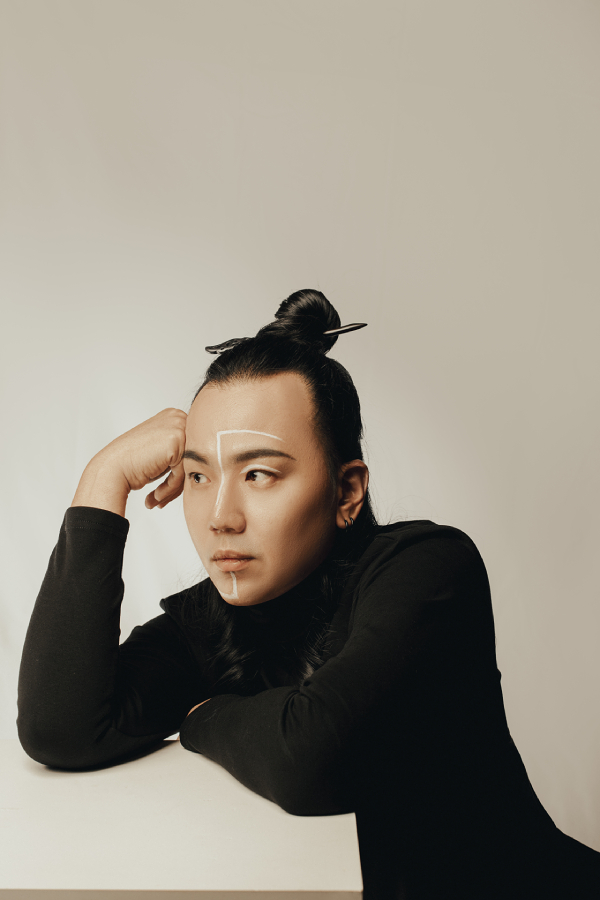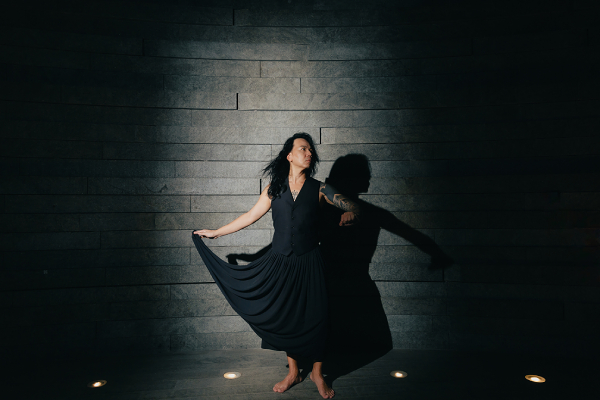
I was always fascinated by sounds in general as a kid. Most of us had piano lessons as children, but what called out to me was my primary instrument, the Chinese flute.
I’d never seen it before; I just heard its sound, and something in me just clicked. I sought it out—it was a very interesting journey. When I travelled to Tibet in my early teens, I was also inspired by the monks in the monastery performing their chants.
Later, around 2017 or 2018, I worked with Hanggai, the Mongolian rock band. One of them specialised in Mongolian throat singing, and that’s where I picked up little things here and there.
It's always been about the kind of sounds that we can make as humans, where we draw on different cultural roots as well.
When I first started doing this, I was looking for a different kind of sound—something distinct from the singer-songwriter style of singing. Something more primitive, I was drawn to that.
I don’t think there is a line [between noise and music]. It is always moving because it’s a matter of perception.
What some perceive as music, others perceive as noise—and that changes with time. Rock music, for example, was once called the devil’s sound.
I think what defines it is the intentionality behind the creation of sound.
The biggest artistic challenge I face is defining sound’s place in the current sphere, especially in an era dominated by visuals—Netflix, social media, and TikTok videos.
Visual elements have taken over as a stronger narrative force. But I think it’s important to get people to understand that sound is something very prevalent in everything we do.
With the changing times, people began looking at what intercultural or interdisciplinary art could be. That’s where SAtheCollective came in to fill that gap in Singapore.
Kali Yuga was that first step—it was non-verbal, a mixture of theatre, dance, and music. It’s similar to what we’re doing now with sound theatre. That was the birth of it.
There was a real connection with the audience. They could connect with this without needing too much cognitive interpretation. There was this feeling—some kind of liminality. It was quite an interesting vibe.
With Age of Revelation, the youngest audience member we had was three years old. There was no prelude or preparation for the child, but afterwards, they were actually able to articulate the gist of the story.
Words aren't always necessary to convey meaning.

I’m trying to revitalise how people consume art and the role that art plays in daily life.
Back in the '80s, people would sit at the void deck with guitars, just playing and humming tunes. That’s something that’s dropped off over the years.
Having art as part of your daily life—having that awareness—is something we’re trying to bring back.
I don’t think the issue is with Netflix or any of that. Yes, there’s been a shift—but that kind of shift has always existed. Movies, films—they’ve always been there.
The bigger issue is a kind of conscious shift, and I’m not even sure if it’s been fabricated from the top down.
It’s like competitiveness was seeded in us. Over the last 60 years, Singapore focused on nation-building. We gained a lot—financial stability, infrastructure—but at the same time, our culture was diminished.
When I used to teach, I would ask my students, “Hey, do you listen to...?” and they’d say, “What’s that?” Some didn’t even listen to the radio. They’d say, “My mother said I can’t—it’ll affect my studies.”
In Singapore we tend to keep things in silos: theatre is theatre, music is music. Even the sub-genres of music are kept separate. I feel that things can be more blended.
The way we perceive and consume art—there’s room to explore how we can integrate those forms more meaningfully.
I have wavered from my goal of uplifting local artists.
Truth be told, living in Singapore, there are challenges. We used to romanticise the idea of the poor starving artist—but there’s also the reality of daily life.
Things are getting more expensive. Even putting up productions is more costly here than in neighbouring countries, even Australia.
Should I even still be doing this? If I applied my creativity elsewhere, I could probably earn a lot more.
But I feel there’s still a need to push through, to find the next generation of artists, and to plant the seeds in the masses for a love of art.
There’s more to life than just mahjong and sweets.
Before I had kids, my art was more self-indulgent. It was about how the art felt to me—not so much about the audience.
But once I had my first child, there was a conscious shift in thinking: what is art’s place in society, and how does it help shape the world we live in? How does it shape our inner world?
Advice is important but for artists especially, it has to be a conscious process. Advice lets us see things from someone else’s perspective—but we need to be clear on what we take in and what we keep in the background.
Sometimes, when you experience something later, a line of advice comes back to you and you go, “Ah, so that’s what they meant.”
Culture is not something you keep in a museum. It’s constantly evolving. It needs to evolve with time, with the space we’re in, and in conjunction with everything happening in the world.
Honour tradition—but don’t be blinded or confined by it.